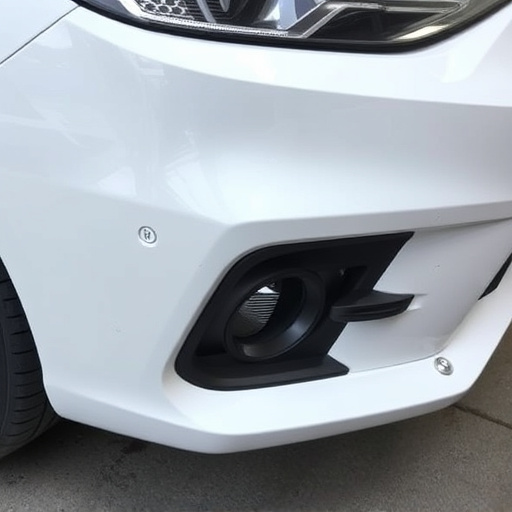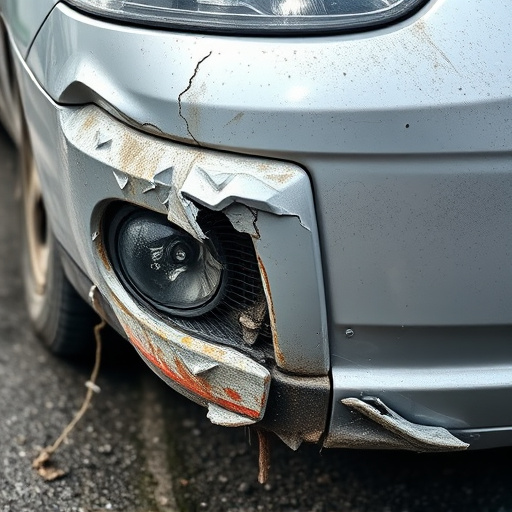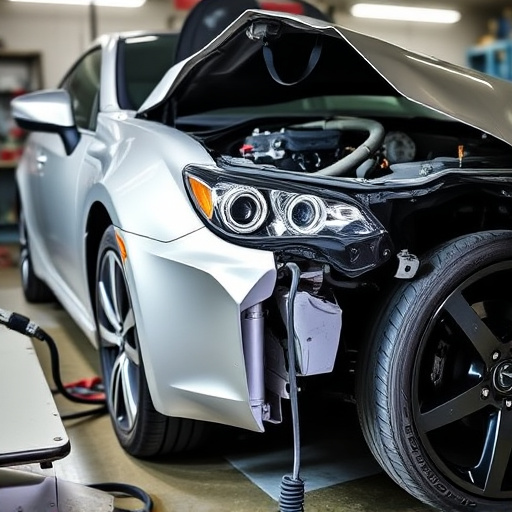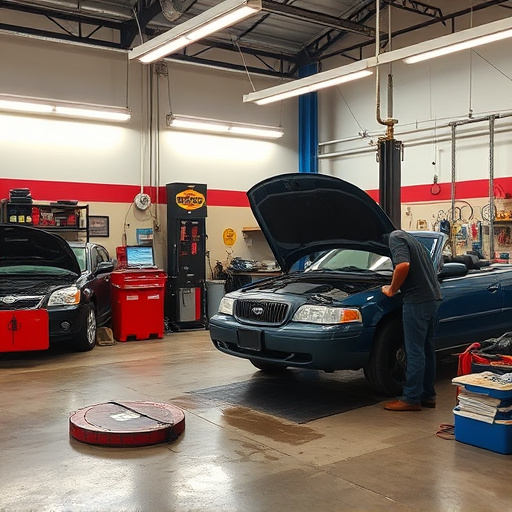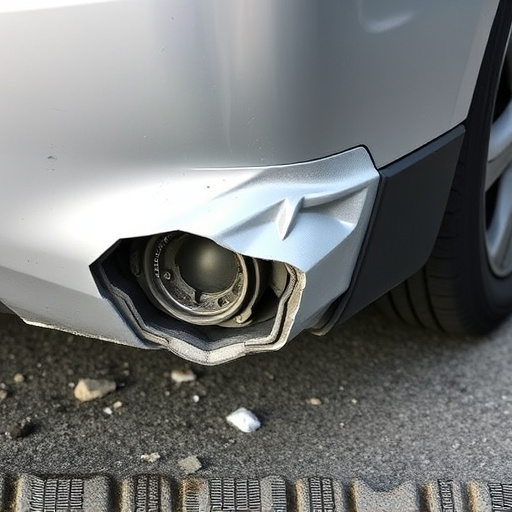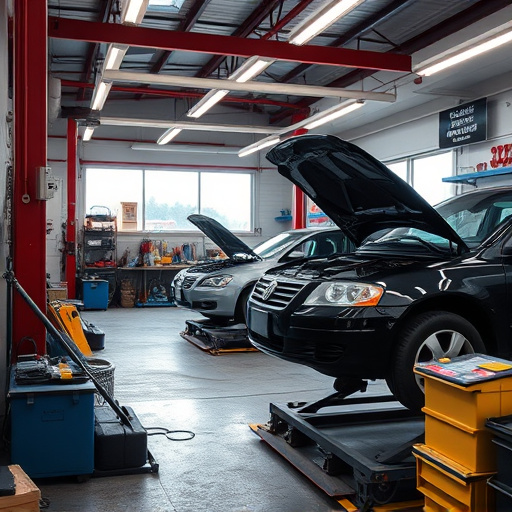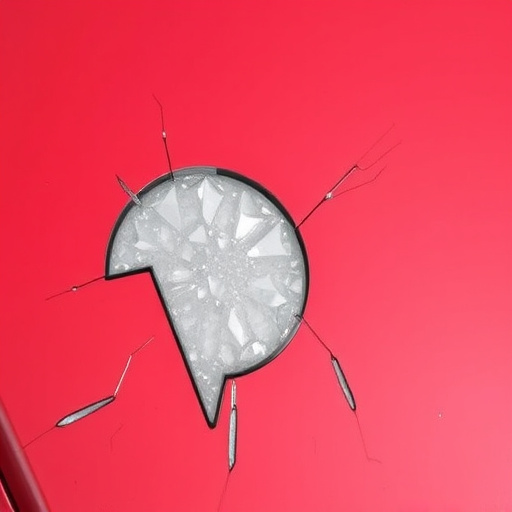After suspension adjustments or body work on your Mercedes, recalibrate the Lane Assist system to ensure accurate lane keeping and enhanced safety. Follow a simple step-by-step guide for recalibration, parking, engaging the parking brake, accessing the control unit, and driving through specific maneuvers. Regular calibrations maintain system effectiveness.
Mercedes’ Lane Assist system is a crucial feature designed to keep your vehicle centered in its lane, enhancing safety. However, after certain suspension adjustments, a recalibration may be required for optimal performance. This article guides you through understanding the Mercedes Lane Assist System and the situations demanding recalibration following suspension work. We also provide a step-by-step process for performing this adjustment, ensuring your vehicle’s active safety features function at their best.
- Understanding Mercedes Lane Assist System
- When Recalibration is Necessary After Suspension Adjustments
- Step-by-Step Guide for Lane Assist Recalibration
Understanding Mercedes Lane Assist System

The Mercedes Lane Assist System is an advanced driver assistance feature designed to ensure your vehicle stays safely centered in its lane. Using a combination of cameras and sensors, it monitors road markings and steering inputs to provide subtle corrections if the car starts to drift out of its lane. This innovative technology not only enhances safety but also reduces driver fatigue during long journeys.
When making suspension adjustments or certain types of automotive body work, such as repairs after an accident or paint jobs, recalibration of the Mercedes Lane Assist System may become necessary. These changes can disrupt the system’s ability to accurately gauge lane positioning and steering inputs. Consequently, proper recalibration ensures that the lane assist functionality operates optimally, providing drivers with the confidence and security they need while on the road. Thus, if you’ve recently had car paint repair or suspension adjustments, be sure to schedule a lane assist recalibration at your local car repair shop to maintain peak safety performance.
When Recalibration is Necessary After Suspension Adjustments

After making adjustments to your Mercedes suspension system, it’s crucial to understand when a Mercedes lane assist recalibration is necessary. Changes in suspension components can disrupt the vehicle’s sensor alignment and calibration, leading to inaccuracies in the lane-keeping assistance system. This is particularly true if you’ve undertaken modifications such as installing new shocks or struts, lowering springs, or even replacing the steering rack—all of which can significantly impact how the car perceives its position on the road.
In such cases, the Mercedes lane assist system may struggle to maintain proper alignment and could emit warnings or fail to engage altogether. To restore optimal performance, a recalibration is required. This process involves realigning the sensors and software to ensure the lane assistance works correctly and provides the driver with accurate feedback for enhanced safety while navigating curves and highways. Consider seeking expert help from professional auto body repairs specialists who have experience with Mercedes vehicles to perform this critical task.
Step-by-Step Guide for Lane Assist Recalibration

Recalibrating your Mercedes Lane Assist system after suspension adjustments is crucial for optimal performance and safety. Here’s a step-by-step guide to help you through this process, ensuring your vehicle returns to its highest levels of stability and control.
1. Preparation: Begin by ensuring your vehicle is parked on a level surface and all doors are closed tightly. Engage the parking brake for added security during the recalibration process. This step is vital as it prevents unintended movements that could disrupt the calibration.
2. Accessing the System: Next, locate the control unit responsible for the Lane Assist system. In most Mercedes models, this can be found in the vehicle’s glove compartment or under the steering wheel. With the correct tools and access, you can now initiate the recalibration sequence through the in-car infotainment system.
3. Recalibration Process: Follow the on-screen instructions to start the lane assist recalibration. The process involves a series of guided maneuvers designed to reset the system’s sensors. Drive at specific speeds and make gentle turns as instructed, allowing the vehicle to adapt its settings accordingly. This step may require you to utilize your collision repair services or auto painting expertise to access certain components safely.
4. Completion: Once the recalibration is complete, the system will notify you via a message on the infotainment display. At this point, your Mercedes Lane Assist should be ready for use, offering enhanced stability and lane-keeping capabilities. Regularly scheduled calibrations are essential, especially after any extensive vehicle repair services or modifications to ensure the system remains effective.
Mercedes owners looking to maintain optimal vehicle performance should understand the importance of lane assist recalibration after any suspension adjustments. The process ensures the system accurately guides drivers, enhancing safety on the road. By following a structured guide, individuals can successfully recalibrate their Mercedes’ lane assist, allowing for seamless navigation and a more responsive driving experience.


